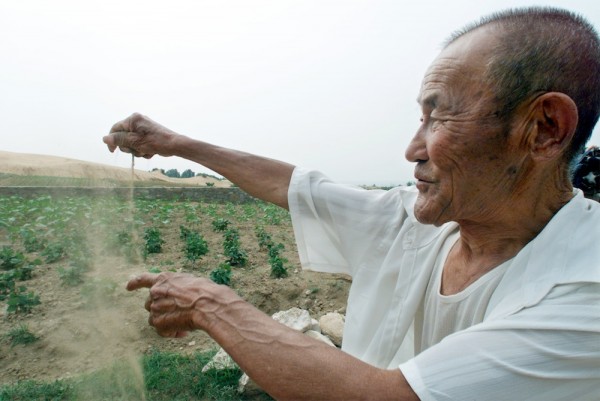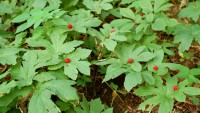Great Green Wall of China Finally Holds Back The Gobi
| Michael A. Katz | | Dec 15, 2014 09:22 PM EST |
(Photo : Reuters) After decades of growth and patience, a massive swath of trees planted across bone-dry northern China nearly 40 years ago is finally starting to reverse the desertification of the region.
After decades of growth and patience, a massive swath of trees planted across bone-dry northern China nearly 40 years ago is finally starting to reverse the desertification of the region.
In what is likely the largest ecological engineering project in history, China's Great Green Wall (officially known as the Three-North Shelter Forest Program) was started in 1978 and was created to fend off the encroaching Gobi desert. It is due to be completed in 2050, and is expected to contain more than 100 billion trees in a band covering more than one-tenth of China.
Like Us on Facebook
"Vegetation has improved and dust storms have decreased significantly in the Great Green Wall region, compared with other areas," Minghong Tan of the Institute of Geographical Sciences and Natural Resource Research in Beijing told New Scientist.
Tan and colleague Xiubin Li analyzed rainfall data, satellite images and an index of dust storms and found conclusive evidence that the Green Wall is the main cause of the increase in vegetation and the decline in dust storms.

Away from the Wall, they found that vegetation cover and dust storms rise and fall based on the amount of precipitation. But closer to the trees, vegetation increased and dust storms diminished between 1981 and 1998. And Tan says the region continues to improve. "In most places in the study area, greenness continued to increase between 2000 and 2010," he said. "In North China as a whole, we think the environment is getting well."
The insatiable Gobi has been responsible for devouring 1,400 square miles of grassland each year. And each year, dust storms take off as much as 800 square miles of topsoil, and as a result the storms have increased in severity each year.
The fourth and most recent phase of the Great Green Wall was started in 2003 and included aerial seeding to cover large areas of land where the soil is less arid, and offering cash incentives to farmers who plant trees and shrubs in drier areas.
The Wall is intended to have a belt with sand-tolerant vegetation arranged in checkerboard patterns in order to stabilize the sand dunes. A gravel platform will be next to the vegetation to hold down sand and encourage a soil crust to form. The trees also intended to provide a windbreak from dust storms.
TagsChina’s Great Green Wall is Finally Holding Back the Desert, Great Green Wall, Three-North Shelter Forest Program, Gobi Desert, desertification, Minghong Tan, Xiubin Li, Institute of Geographical Sciences and Natural Resource Research, Great Green Wall Keeps Desert at Bay
©2015 Chinatopix All rights reserved. Do not reproduce without permission
EDITOR'S PICKS
-

Did the Trump administration just announce plans for a trade war with ‘hostile’ China and Russia?
-

US Senate passes Taiwan travel bill slammed by China
-

As Yan Sihong’s family grieves, here are other Chinese students who went missing abroad. Some have never been found
-

Beijing blasts Western critics who ‘smear China’ with the term sharp power
-

China Envoy Seeks to Defuse Tensions With U.S. as a Trade War Brews
-

Singapore's Deputy PM Provides Bitcoin Vote of Confidence Amid China's Blanket Bans
-

China warns investors over risks in overseas virtual currency trading
-

Chinese government most trustworthy: survey
-

Kashima Antlers On Course For Back-To-Back Titles
MOST POPULAR
LATEST NEWS
Zhou Yongkang: China's Former Security Chief Sentenced to Life in Prison

China's former Chief of the Ministry of Public Security, Zhou Yongkang, has been given a life sentence after he was found guilty of abusing his office, bribery and deliberately ... Full Article
TRENDING STORY

China Pork Prices Expected to Stabilize As The Supplies Recover

Elephone P9000 Smartphone is now on Sale on Amazon India

There's a Big Chance Cliffhangers Won't Still Be Resolved When Grey's Anatomy Season 13 Returns

Supreme Court Ruled on Samsung vs Apple Dispute for Patent Infringement

Microsoft Surface Pro 5 Rumors and Release Date: What is the Latest?













